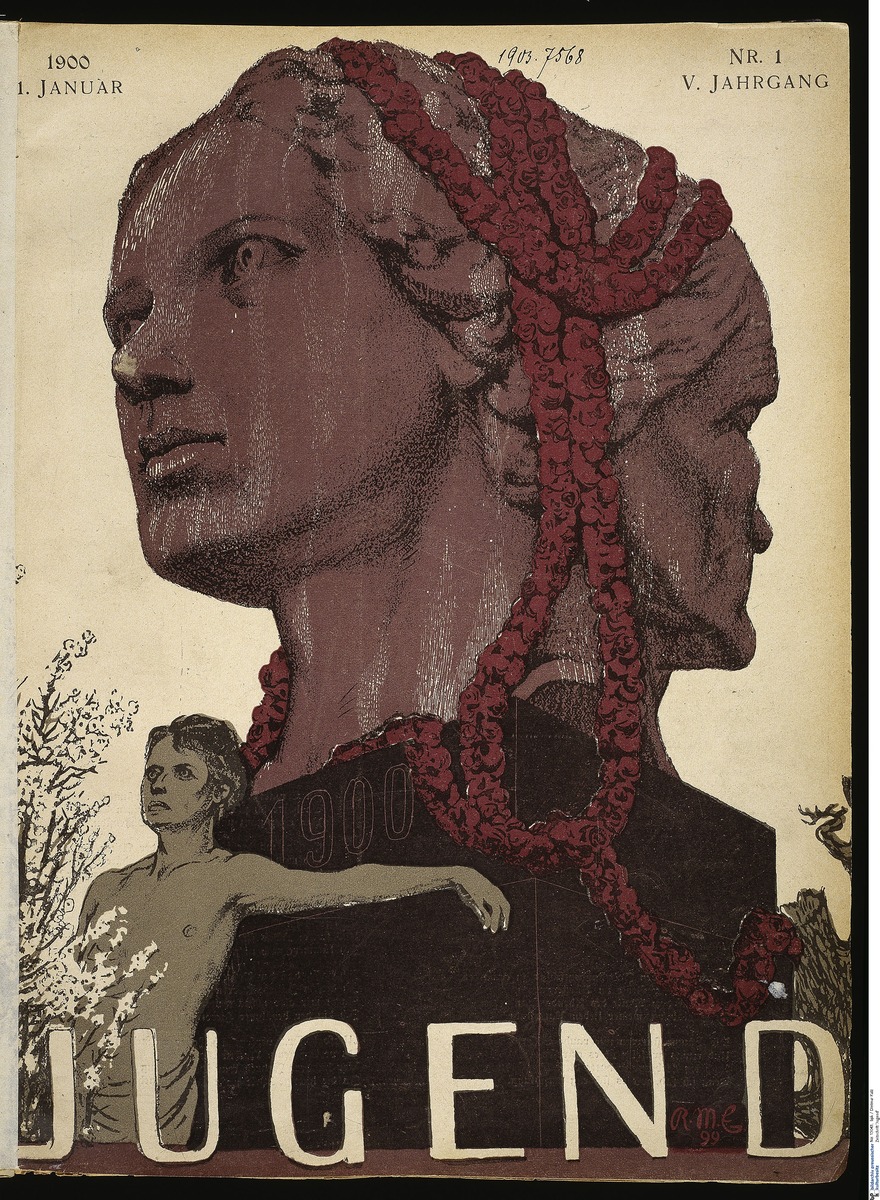Abstract
Georg Hirth (1841-1916) launched the journal
Jugend
[Youth] in Munich in 1896 with the
express goal of showcasing the newest trends in art and literature.
Jugend was to be an “ecumenical”
forum for creative expression, promoting no single school or artistic
agenda. Nevertheless, the journal became so closely associated with a
specific style of painting, drawing, and design – one characterized by
precise lines, undulating shapes, flat planes of color, and stylized
representation – that it eventually lent its name to that style:
Jugendstil (literally, Youth-style).
Jugendstil (or
Art Nouveau in French) swept aside
nineteenth-century historicism and made room for freer forms of artistic
expression. The journal was known for its illustrations as well as its
critical and satirical texts. It counted prominent writers, such as
Georg Simmel, among its many contributors.
Jugend was published up to 1940, but
its heyday ended with the First World War.
